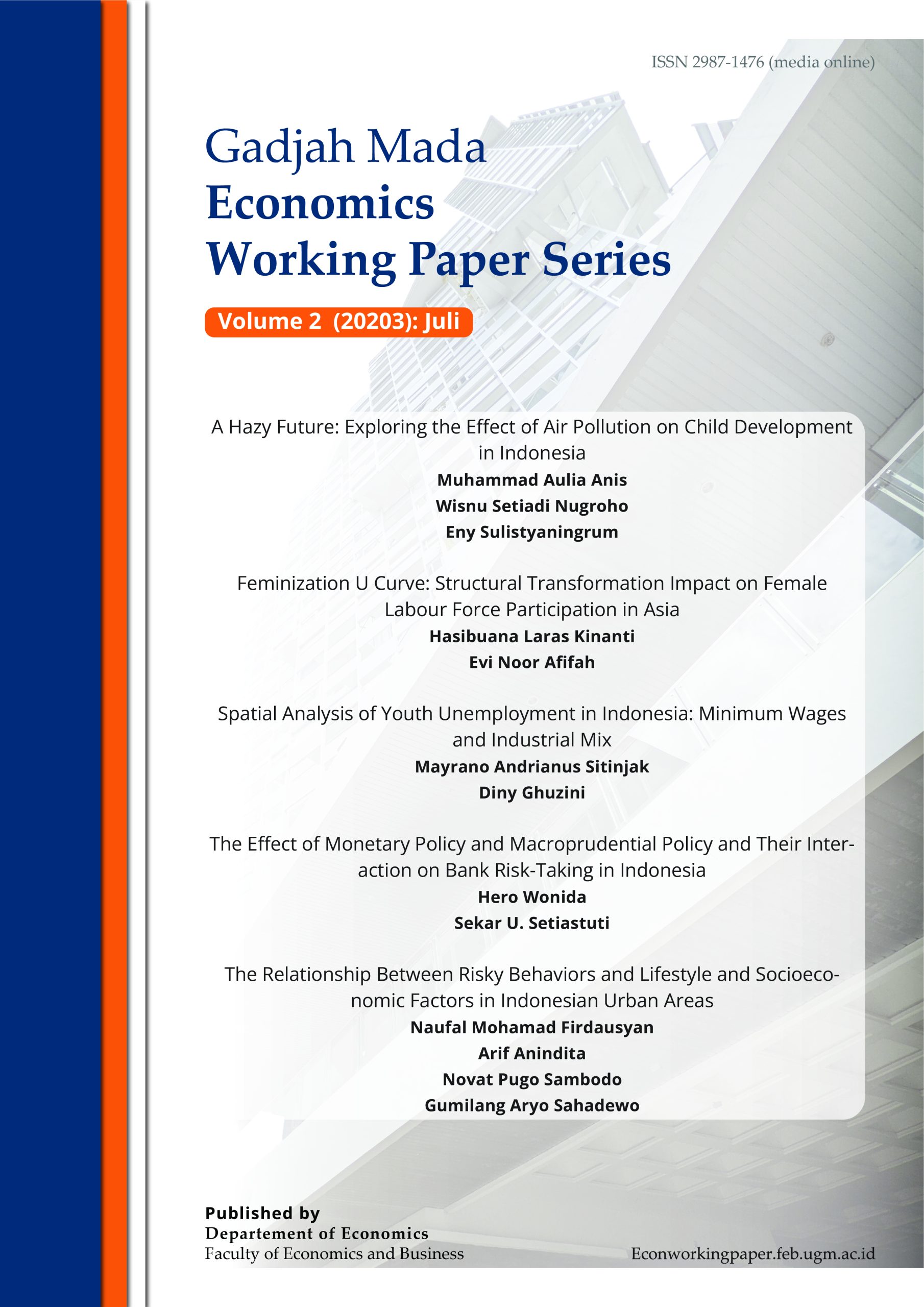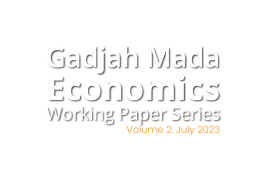Agustus
Abstract
Assessment of determinants of risky behaviors, such as smoking, vaping, alcohol consumption, and drug abuse, is critically important to be conducted. Nonetheless, previous studies only looked at the role of socioeconomic factors and their relationship to risky behaviors in young people, but did not consider the lifestyle. To address this issue, we utilized microdata from the Narcotics Board of Indonesia (BNN), namely the Indonesia Urban Lifestyle Community Survey 2018, to determine which characteristics, in terms of lifestyle and socioeconomic factors, are related to the conduct of smoking, vaping, alcohol consumption, and drug abuse among young adolescents in Indonesia. Using the logistic regression method, we discovered that risky behaviors are a vicious circle. Peer effect has been linked to a higher likelihood of engaging in risky behaviors as well as nightclub visits. Gender, education, and parental education were all significant socioeconomic factors for some behaviors. This result implies that the effort to alleviate the prevalence of risky behaviors must be integrated and comprehensive.
Abstract
Air pollution is a significant issue in emerging economies like Indonesia, with detrimental effects on human health. This study aimed to analyse the impact of air pollution on child development, using various datasets and employing an instrumental variable approach. The findings revealed that an increase of 1 μg/m3 in regional PM 2.5 concentration had a significant negative effect on child growth, reducing height-for-age and weight-for-age scores by 0.08 standard deviations. No significant impact was observed on the stunting variable. The study also found that girls were particularly susceptible to impaired child development due to air pollution. These results emphasize the need for policies targeting air pollution reduction to support healthy child development, especially in low-income households.
Abstract
This study examines the spatial distribution of youth unemployment rates (15–24 years old) and the impact of wages and industrial composition on these rates in Indonesian provinces. The persistently high youth unemployment rate and uneven distribution of youth labor across provinces have motivated this research. Data from 2010 to 2018, sourced from Sakernas and other BPS publications, were analyzed for 33 Indonesian provinces. This study employed Moran’s index and spatial panel data methods. The findings reveal a clustered spatial pattern of youth unemployment rates among provinces. best-fitting model, identified as the Spatial Durbin Model (SDM) with random effects, indicates that increasing the minimum wage ratio significantly contributes to higher youth unemployment rates. Conversely, higher real wages lead to a slight decrease, whereas greater industrial sector absorption reduces youth unemployment. However, increased absorption in the service sector amplifies youth unemployment
Abstract
We use the Indonesian quarterly bank-level data from 2009Q1 to 2021Q1 to investigate the effect of monetary policy, macroprudential policy, and the interaction between both policies on bank risk-taking in Indonesia. Several important results emerge. Firstly, we find evidences of the existence of risk-taking channels of the monetary policy in Indonesia, and that both bank size and level of capital have a relatively significant negative impact on bank risk-taking. Secondly, macroprudential policy tightening lowers bank risk-taking. We also find that the interaction between macroprudential policy and monetary policy tightening lowers risk-taking.
Abstract
This research aims to observe the relationship between female labour force participation with economic development and to test Feminization U Curve (FEMU) hypothesis in Asian countries for the period 1990-2018. FEMU model is estimated with static model Fixed Effect as conducted in the initial research and elaborated with dynamic panel model Generalized Method of Moments (GMM). Overall, the static and dynamic model confirmed the U curve relationship between female labour force participation and economic development in accordance with FEMU hypothesis, thus female labour force participation decreases when the economy undergoes structural transformation from agricultural to industrial, and it will rise as the economy goes service sector. The hypothesis is also confirmed in the country-income categorized model. The U curve is more consistent in static model compared to the dynamic one. In addition to the structural changes that has been occurring, the dynamics of female labour force participation in Asia also can be explained with the decline in fertility rate and improvement of female tertiary education.


